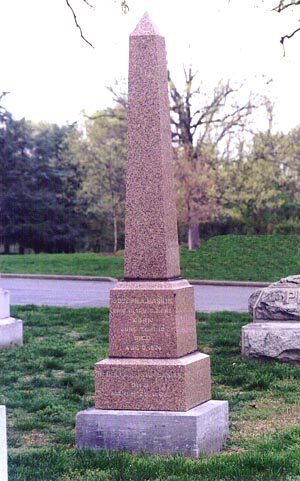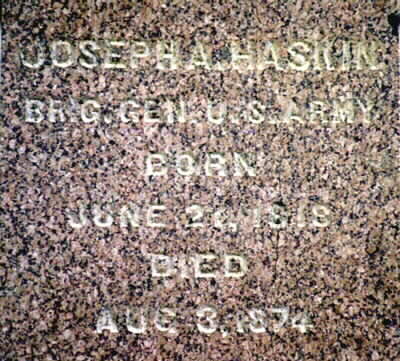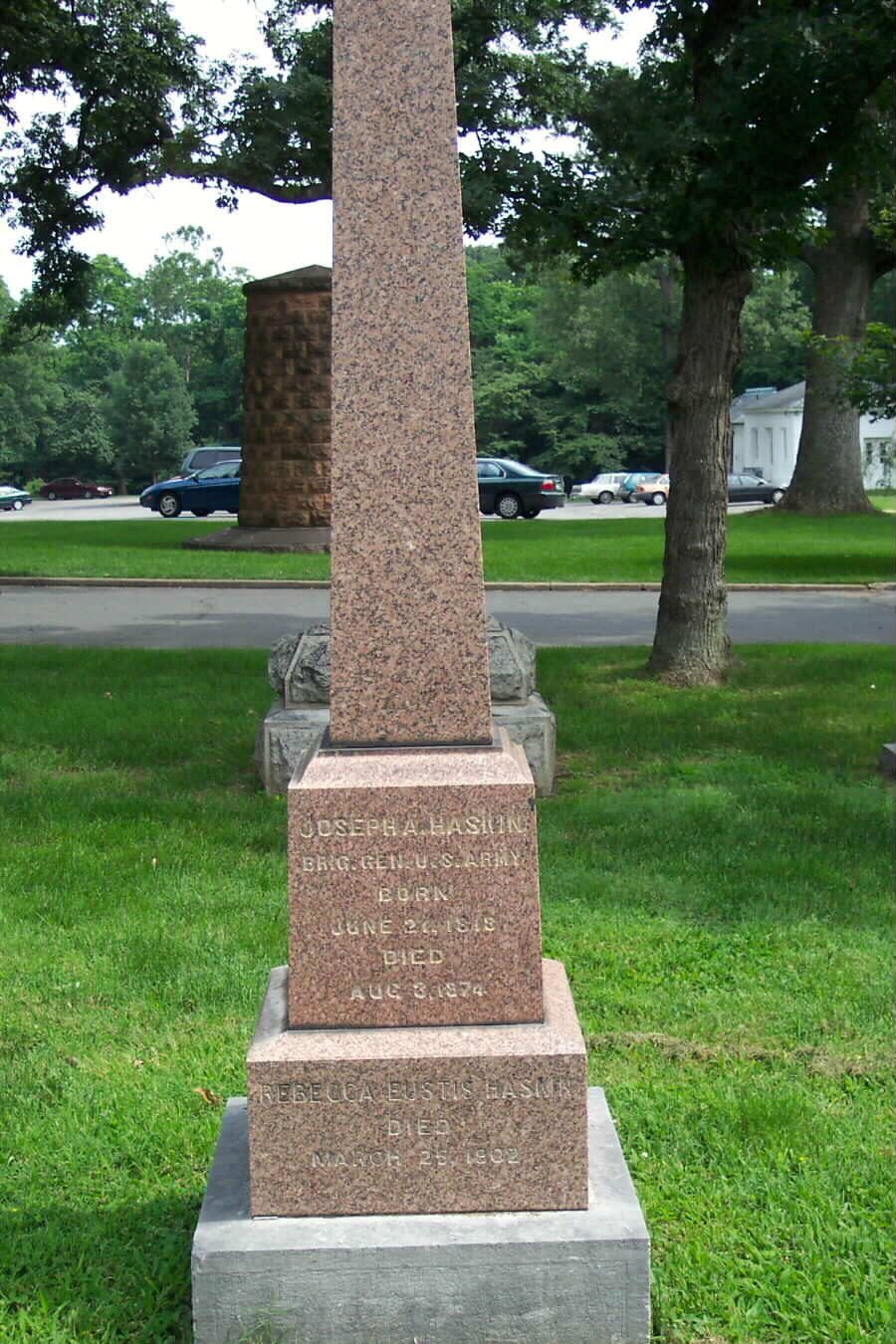Joseph Abel Haskin was born at Troy, New York, June 21, 1818. He graduated 10th in the United States Military Academy class of 1839 – the 3rd man was Henry W. Halleck.
Haskin was commissioned a Second Lieutenant, 1st United States Artillery, and servved five years on the Maine frontier during Disputed Territory controversy with England. It was there, at Holton, that he met and married his wife. In the Mexican War served with Winfield Scott’s army, and lost his left arm at storming of Chapultepec, Mexico. He received the brevets of Captain and Major for gallantry.
Thereafter, he performed recruiting duty, was a Quartermaster for 3 years, and in garrisons at various points throughout South and Southwest. At the time of the secession of Louisiana he was Captain of the 1st United States Artillery and was breveted Major in command of the barracks and arsenal at Baton Rogue, Louisiana. On January 10, 1861, the governor, backed by greatly superior force, summoned him to surrender the government property under his command. Having no other alternative, he was forced to comply.
Following garrison duty at various points, he was placed in charge of northern defenses of Washington, D.C., where he served from 1862 until 1864. In the latter year he was appointed Chief of Artillery, Department of Washington, D.C., a post he occupied until the end of the war.
He was instrumental in repelling attack of Confederate General Jubal Early on Fort Stevens, Virginia, in July 1864, and for those services was promoted to Brigadier General of Volunteerss with rank from August 5 and brevet Brigadier General in the Regular Army the following March.
As Lieutenant Colonel, 1st United States Artillery, he commanded Fort Independence in Boston Harbor and then, from 1866 until 1870, Forts Schuyler and Wood, New York Harbor.
On December 15, 1870, he was retired from active service for disability resulting from the loss of an arm in battle.
For next 2 years lived in Oswego, New York, where contracted tuberculosis. His last two years were spent principally in Charleston in an attempt to regain health. On August 3, 1874, he died in Oswego and buried in Riverside Cemetery. His remains were subsequnently moved to Arlington National Cemetery.
HASKIN, JOSEPH A
BRIG/GEN US ARMY
- VETERAN SERVICE DATES: Unknown
- DATE OF DEATH: 08/03/1873
- DATE OF INTERMENT: Unknown
- BURIED AT: SECTION WS OF SITE L 144 P
ARLINGTON NATIONAL CEMETERY
HASKIN, REBECCA W/O JAS A
- DATE OF DEATH: 03/25/1902
- DATE OF INTERMENT: Unknown
- BURIED AT: SITE LOT 144A
ARLINGTON NATIONAL CEMETERY - WIFEOF JA HASKIN – COL US ARMY
Oswego (NY) Daily Times, Aug 3, 1874, courtesy:
Thomas A. Cloutier, business manager, Oswego Palladium-Times.
Interesting to note that obituary, in high-flown style of the day, omitted mention of surrender of Baton Rogue arsenal, certainly most note-worthy event of career. There was nothing discreditable about surrender and subsequently received several promotions and numerous stations of trust, contemporary feeling was to sweep it under the rug lest it soil the reputation of “a hero of the war.”
Rebecca Eustis Eastman Sprague Haskin, the wife of Joseph Able Haskin and the mother of William Lawrence Haskin. She died on March 25, 1902. and was buried with her husband in Section 1 of Arlington National Cemetery.
His son, Brigadier General William Lawrence Haskin is also buried in Arlington National Cemetery.
Michael Robert Patterson was born in Arlington and is the son of a former officer of the US Army. So it was no wonder that sooner or later his interests drew him to American history and especially to American military history. Many of his articles can be found on renowned portals like the New York Times, Washingtonpost or Wikipedia.
Reviewed by: Michael Howard



